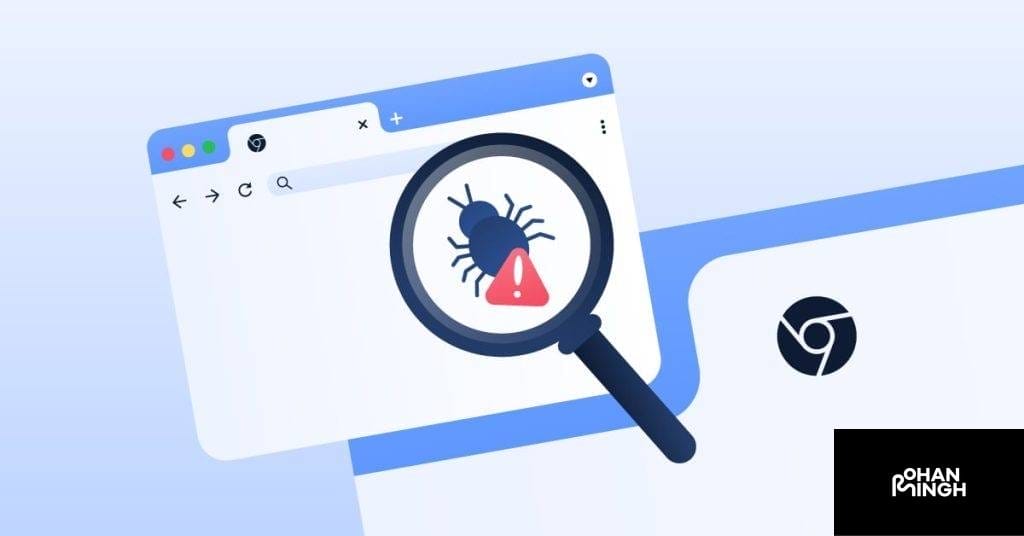Are You Protected from the Google Bard Malware? Learn How to Avoid the Bard Ads Virus Today!

What is Google Bard?
Google Bard is an innovative artificial intelligence (AI) platform developed by Google. It aims to create engaging and interactive content for users through the use of AI algorithms. While it offers tremendous potential for creativity and user engagement, there have been recent reports of malware spreading through Google Bard ads. This poses a significant threat to unsuspecting users, as malicious actors exploit the platform to spread malicious software and engage in data theft. This article will explore how this malware is spreading and provide valuable tips on how to avoid becoming a victim of these attacks.
Table of Contents
ToggleMalware Spreading through Google Bard Ads:
Security researchers have identified a malicious campaign targeting Google Bard, wherein threat actors upload fake Google Bard apps that contain malware scripts. These fake apps imitate legitimate chatbots and offer various services to gain trust from users. Once installed, the apps can steal sensitive information such as login credentials and personal data. Additionally, these malicious links can redirect users to suspicious websites or initiate phishing attacks.
Avoiding Google Bard Malware:
To protect yourself from Google Bard malware, it is crucial to exercise caution while interacting with any Google Bard advertisements or apps. Firstly, ensure that you only download and install Google Bard apps from trusted sources, such as Google Play Store or authorized websites. It is also advisable to keep your operating systems and browser extensions up to date, as security patches often address vulnerabilities exploited by malware. Be wary of suspicious links or pop-ups, and avoid clicking on them. Additionally, use reputable antivirus software and regularly scan your devices for any potential malware threats.
While Google Bard offers a unique and engaging user experience, it is essential for users to remain vigilant to avoid falling victim to malware attacks. By following the recommended security practices and staying informed about the latest threats, users can enjoy a safe and secure browsing experience without compromising their personal information.
Malware Spreading Through Ads
Malware spreading through ads has become a growing concern in recent years, as threat actors continue to find new ways to exploit unsuspecting users. One platform that has recently been targeted is Google Bard, an artificial intelligence (AI) platform developed by Google. Reports have emerged of malware spreading through Google Bard ads, posing a significant threat to user security.
These malware campaigns typically involve threat actors uploading fake Google Bard apps that contain malicious scripts. These apps are designed to mimic legitimate chatbots and offer various services, tricking users into downloading and installing them. Once installed, the malicious apps can steal sensitive information like login credentials and personal data, or redirect users to suspicious websites for further attacks.
This type of malware campaign is not limited to Google Bard alone. Other popular platforms, such as Facebook, have also experienced similar incidents of malware spreading through ads. For example, earlier this year, there were reports of malware being distributed through engagement with Facebook ads.
To protect yourself from malware spreading through ads, it is crucial to exercise caution while interacting with any form of advertisement. Only download apps from trusted sources like the official app stores or authorized websites. Keep your operating system and browser extensions up to date, as security patches address vulnerabilities often exploited by malware. Be vigilant about suspicious links or pop-ups and avoid clicking on them.
To enhance your online security, consider using reputable antivirus software and regularly scan your devices for potential malware threats. By staying informed and taking necessary precautions, you can significantly reduce the risk of falling victim to malware spreading through ads, including those on platforms like Google Bard.
Let's talk about your future project!
Eager to collaborate on your upcoming endeavor? Let's explore and ignite the potential of your next big idea, shaping a promising future together!
Threat Actors
Threat actors are individuals or groups who carry out malicious activities with the intention of exploiting vulnerabilities and infiltrating systems or networks. In the context of malware spreading through Google Bard ads, threat actors play a significant role in creating and distributing these harmful applications. They exploit unsuspecting users by uploading fake Google Bard apps that contain malicious scripts, aiming to steal valuable information or carry out further attacks. These threat actors are constantly evolving their tactics and techniques to make their malware campaigns more sophisticated and harder to detect. To protect yourself from falling victim to their malicious activities, it is vital to be aware of their tactics and take the necessary precautions to avoid them.

Who Are the Threat Actors?
Malicious actors are behind the recent surge in malware attacks through Google Bard ads. These threat actors utilize various techniques to spread their malicious software and carry out sophisticated campaigns targeting unsuspecting users.
Their motives vary, but the common goal is to compromise the security and privacy of individuals and organizations. They aim to steal valuable data, such as personal information, credentials, and financial details, for financial gain or other nefarious purposes. By exploiting vulnerabilities in popular sites, browser extensions, and separate browser accounts, these threat actors exploit user trust to deliver malware scripts and engage in malicious campaigns.
One recent instance involved a fake ChatGPT app impersonating a legitimate ChatGPT service. With thousands of followers on social media, this malicious link distributed info-stealing malware to targets. The attacks were designed to be undetectable, making it difficult for security researchers to trace them.
To protect yourself and your system from such threats, it is crucial to exercise caution when clicking on suspicious links or downloading dubious content. Keep your operating systems and software up to date with the latest security patches, and regularly scan your systems for any signs of malware.
Google Bard malware attacks serve as a stark reminder of the need for robust cybersecurity measures and user education to mitigate potential risks associated with online advertising platforms.
How Do They Operate?
Google Bard malware is being spread by sophisticated threat actors who are adept at luring unsuspecting users into their malicious schemes. These threat actors employ various tactics and techniques to deploy malware-as-a-service software and steal credentials, particularly from Facebook accounts.
Firstly, these threat actors identify vulnerable targets by conducting extensive research on internet users, their behaviors, and preferences. They then leverage this information to craft highly convincing Google Bard ads that appear legitimate and trustworthy. These ads are strategically placed on popular websites and social media platforms to maximize user engagement.
Once a user clicks on the ad, they are redirected to a malicious website or prompted to download a seemingly harmless application or file. This is where the malware-as-a-service software comes into play. The threat actors utilize this sophisticated software to stealthily install the RedLine Stealer malware onto the user’s device.
To further deceive users, the threat actors utilize Facebook pages to promote fake ChatGPT and Google Bard apps. These apps are designed to appear authentic and enticing, attracting a large number of unsuspecting users. However, once these apps are installed, they deliver the RedLine Stealer malware, which is specifically designed to steal credentials, including login information for Facebook accounts.
To protect yourself from falling victim to these malicious campaigns, it is crucial to be vigilant while browsing the internet. Avoid clicking on suspicious ads or downloading applications from untrusted sources. Utilize reputable antivirus software and regularly update your operating system and applications to patch any potential vulnerabilities. By staying cautious and proactive, you can minimize the risk of falling prey to threat actors spreading Google Bard malware.
What Is Their Motive?
The motive behind threat actors targeting Google Bard ads is driven by their desire to engage in malicious activity. With Google Bard being an artificial intelligence-powered writing tool that has gained significant popularity, it becomes a prime target for these actors to exploit unsuspecting users.
These threat actors aim to deceive users by crafting convincing Google Bard ads that appear legitimate and trustworthy. They conduct extensive research on internet users, their behaviors, and preferences to identify vulnerable targets. By strategically placing these ads on popular websites and social media platforms, they maximize user engagement and increase the likelihood of successful attacks.
Once a user clicks on the ad, they are redirected to a malicious website or prompted to download what seems to be a harmless application or file. The threat actors leverage sophisticated malware-as-a-service software, such as the RedLine Stealer, to install malware on the user’s device stealthily. This malware is specifically designed to steal sensitive information, including login credentials.
Understanding the motive behind these malicious activities is crucial in combating these threats effectively. By being aware of their tactics and scams, users can be more cautious when interacting with Google Bard ads and avoid falling victim to these attacks. Additionally, security researchers and technology companies should actively monitor and develop security patches to mitigate the risks posed by these threat actors.
The motive behind targeting Google Bard ads is to exploit unsuspecting users and steal their private information. By understanding these motives and staying vigilant, users can protect themselves from falling victim to these scams.

Malicious Software
Malicious software, also known as malware, represents a significant threat in the digital landscape. With the emergence of new technologies and the increasing reliance on online platforms, cybercriminals are continuously finding innovative ways to exploit unsuspecting users. One particularly concerning trend is the spreading of malware through Google Bard ads. These deceptive and convincing ads are strategically placed on popular websites and social media platforms, targeting vulnerable individuals who may unknowingly click on them. Once clicked, users are redirected to malicious websites or prompted to download seemingly harmless applications or files that actually contain harmful malware. These attacks are executed by sophisticated threat actors who exploit the trust and familiarity associated with well-known platforms like Google Bard. To combat this growing threat, it is crucial for users to be aware of these tactics and for security researchers and technology companies to actively develop security patches and tools to safeguard users’ sensitive information.
What Type of Software Is Being Used?
As the impact of Google Bard malware continues to grow, it is crucial to understand the type of software being used to facilitate these malicious attacks. In recent developments, threat actors have been leveraging a dangerous malware known as RedLine Stealer to exploit unsuspecting users through Google Bard ads.
RedLine Stealer is a sophisticated type of data-stealing malware that is being deployed and sold on the dark web. This malicious software is designed to infiltrate systems and quietly collect sensitive information, including usernames, passwords, and other credentials. Once obtained, these stolen credentials are sold to cybercriminals who then exploit them for various illicit activities.
To distribute RedLine Stealer and steal credentials, threat actors adopt deceptive tactics. They create and promote fake ChatGPT and Google Bard applications, which mimic popular services to trick users into downloading them. These fake apps often use the well-known Google AI brand and incorporate realistic interfaces, making them appear legitimate.
Upon installation, these fake apps become vehicles for malware deployment. They effectively compromise user data, allowing threat actors to gain unauthorized access to personal information and even control user accounts. This opens the door to potential data breaches, financial fraud, and identity theft, putting users’ privacy and online security at great risk.
To protect against these nefarious activities, users are strongly advised to exercise caution when downloading apps or visiting suspicious links. Employing reputable anti-malware software and regularly updating security patches is essential in combating such threats.
As the battle between cybercriminals and security researchers rages on, staying informed and vigilant is paramount to safeguarding our data and online presence. By being proactive and adopting secure digital practices, users can significantly reduce the chances of falling victim to Google Bard malware and other cyber threats.
How Is It Being Spread?
The Google Bard malware is rapidly spreading through various methods, taking advantage of unsuspecting users and their trust in popular platforms. One specific type of malware, known as RedLine Stealer, has emerged as a powerful tool in these malicious campaigns.
RedLine Stealer, being sold on the dark web as malware-as-a-service software, enables threat actors to infiltrate systems and steal sensitive information, particularly user credentials. This dangerous software has become a favored choice for cybercriminals due to its capability to discreetly collect usernames, passwords, and other credentials.
To distribute this malware, threat actors have resorted to deceptive tactics, including the creation of fake ChatGPT and Google Bard applications. These apps, promoted through sponsored posts on Facebook pages, aim to trick users into downloading them. By leveraging the popularity and trust associated with the Google AI brand, these fake apps have successfully deceived unsuspecting users.
Once downloaded, these fake apps serve as conduits for RedLine Stealer deployment. This allows threat actors to gain unauthorized access to personal information and even control user accounts, potentially leading to data breaches, financial fraud, and identity theft.
To avoid falling victim to these spreading tactics, users should exercise caution when downloading apps and visiting suspicious links. It is crucial to rely on reputable anti-malware software and ensure regular security updates, effectively safeguarding against the threat of Google Bard malware and the RedLine Stealer software.

What Are the Symptoms of Infection?
The malware spreading through Google Bard ads can have profound effects on the infected users. Identifying the symptoms of infection is crucial in order to take immediate action. If you suspect you have been infected, look out for the following symptoms:
1. Anomalous writing style: Malicious actors often inject grammar and spelling errors into their ads to evade detection. If you notice unusual language or mistakes that deviate from Google’s communication standards, it could be a red flag.
2. Suspicious writing style: Be cautious if the ads exhibit a writing style that seems out of place or inconsistent with legitimate Google Bard ads. Malware authors may employ deceptive tactics to manipulate users into clicking on their malicious content.
3. Unwanted downloads: If you find that your computer or device is downloading files or software without your consent, it could be a sign of malware. This could be a result of interacting with a malicious ad disguised as a Google Bard ad.
4. System slowdowns or crashes: Malware can significantly impact the performance of your device. If you experience frequent freezes, sluggishness, or unexpected crashes, it is essential to investigate for potential malware infections.
To protect yourself from the malware spread through Google Bard ads, ensure that you are cautious while interacting with online advertisements. Never click on suspicious links and install reputable antivirus software that can detect and remove malware effectively. By staying vigilant and proactive, you can safeguard your devices and personal information from these malicious threats.
Info-Stealing Malware and Browser Accounts
Google Bard malware is a growing concern for internet users, as malicious actors continue to find new ways to infiltrate unsuspecting users’ browsers. One particularly dangerous form of malware is info-stealing malware, which can compromise the security of browser accounts and harvest sensitive information. In this article, we will explore the risks associated with info-stealing malware and provide tips on how to protect your browser accounts from such threats.
1. Info-Stealing Malware: Info-stealing malware is a type of malicious software designed to gather sensitive information from infected systems. When it comes to browser accounts, this malware can target login credentials, financial data, and personal information, posing a significant risk to users’ privacy and security. It is crucial to remain vigilant and implement security measures to prevent these attacks.
2. Browser Account Protection: To safeguard your browser accounts against info-stealing malware, it is recommended to regularly update your browser and operating systems, as security patches often address vulnerabilities exploited by malware. Additionally, be cautious while installing browser extensions, as some may contain malicious scripts. Using reputable security software can help detect and block potential threats.
3. Suspicious Links and Downloads: Avoid clicking on suspicious links or downloading files from untrusted sources, as these may contain info-stealing malware. Exercise caution when interacting with unexpected or unfamiliar websites, advertisements, or email attachments. If you encounter a Google Bard ad that appears dubious or prompts unwanted downloads, refrain from interacting with it and report it to Google’s security team.
4. Two-Factor Authentication: Enable two-factor authentication (2FA) for your browser accounts whenever possible. This additional layer of security adds an extra step to the login process and helps prevent unauthorized access, even if login credentials are compromised by info-stealing malware.
By staying vigilant and following these best practices, you can protect your browser accounts from the risks associated with info-stealing malware. Remember to be cautious, keep your software up to date, and report any suspicious activities to ensure a safer browsing experience.
What Information Is Being Stolen?
Google Bard malware is a growing threat that is spreading through Google Bard ads, targeting unsuspecting users. This malicious software is designed to steal various types of sensitive information from infected systems. The information stolen by the Google Bard malware includes login credentials, financial data, and personal information.
The impact of this data theft on the affected users can be devastating. Once the malware gains access to login credentials, it can lead to unauthorized access to users’ accounts, potentially exposing their personal and financial information to malicious actors. Financial data such as credit card details can be used for fraudulent transactions, leading to financial loss and identity theft. Personal information, including social security numbers and addresses, can be exploited for various malicious purposes, such as phishing attacks, identity fraud, or even blackmail.
The consequences of having personal information stolen through these malicious campaigns are severe. Users may face financial loss, reputational damage, and emotional distress. Additionally, information theft can lead to targeted phishing attempts, where users are deceived into revealing more sensitive information or falling victim to further malware attacks.
The risks associated with information theft through Google Bard malware are significant. Users may experience a loss of privacy, as their personal details can be exposed to threat actors. They may also become victims of financial fraud or experience damage to their online reputation. Furthermore, the stolen information can be sold on the dark web, potentially enabling further criminal activities.
To safeguard against these risks, it is crucial for users to follow strong security practices, such as avoiding suspicious links and downloads, regularly updating browser accounts and operating systems, and enabling two-factor authentication. By staying informed and taking proactive measures, users can protect their valuable information from falling into the hands of malicious actors exploiting Google Bard ads.

How Does the Malware Affect Browser Accounts?
Malicious software, such as the Google Bard malware, poses a significant threat to browser accounts and the sensitive information stored within. This sophisticated form of malware exploits various vulnerabilities to gain unauthorized access to users’ accounts, potentially leading to devastating consequences.
One of the most concerning impacts of this malware is the theft of sensitive information, including credit card details and saved credentials. By infiltrating browser accounts, the malware can quietly surveil users’ activity and covertly extract this valuable data. With this information in hand, malicious actors can engage in fraudulent transactions, leading to financial loss and identity theft.
Compromised browser accounts can have far-reaching consequences for unsuspecting users. Not only does it result in financial loss, but it also exposes individuals to a range of risks and vulnerabilities. Stolen information can be used by threat actors to launch targeted phishing attacks, fooling users into revealing even more sensitive data or falling prey to additional malware scripts.
To protect browser accounts from the Google Bard malware and similar threats, users should employ reliable security software and regularly update their operating systems and browser extensions. Additionally, being vigilant about not clicking on suspicious links or downloading dubious content can greatly reduce the risk of falling victim to these devastating attacks.
The Google Bard malware and its ilk present a grave danger to browser accounts, amplifying the risks and vulnerabilities faced by internet users. By understanding the potential impact and taking proactive steps to enhance security, individuals can minimize the threat posed by this insidious form of malware.
Google AI's Efforts to Combat Threats
Google AI is committed to enhancing security measures and combating threats like the Google Bard malware. Through the use of advanced artificial intelligence and innovative technologies, Google continuously strives to stay one step ahead of malicious actors and protect its users from the devastating impacts of malware attacks. By leveraging the power of machine learning and security research, Google AI aims to detect and prevent the spread of malware, ensuring a safer online experience for all Google users.
Google’s Robust Security Systems
Google has implemented robust security systems to mitigate the risks posed by the Google Bard malware and other malicious campaigns. The company works closely with security researchers and constantly updates its security patches to counter emerging threats. Through the analysis of large-scale data and the implementation of machine learning algorithms, Google AI is able to identify patterns and behaviors associated with malware, enabling prompt detection and prevention of potential attacks.
Effective Security Tools and Applications
To provide maximum protection against malware, Google offers a range of security tools and applications. For instance, users can install reliable security software on their devices to detect and block malicious content and suspicious files. Additionally, regularly updating operating systems and browser extensions is crucial to receive the latest security patches and ensure system integrity. Google’s comprehensive security ecosystem also includes features that warn users about phishing links and safeguard against potential threats.
Promoting User Awareness and Education
In addition to technological advancements, Google AI is also focused on promoting user awareness and education to combat the Google Bard malware and other threats. Through educational blog posts, user engagement initiatives, and collaboration with security firms, Google aims to inform users about the dangers of malware and provide tips on how to avoid falling victim to these attacks. By staying informed and adopting secure online practices, users can significantly reduce their vulnerability to malware and protect their sensitive information from being compromised.
Google AI is dedicated to enhancing security measures and protecting users from the Google Bard malware and other malicious campaigns. With their robust security systems, effective tools and applications, and the promotion of user awareness, Google is making significant strides to ensure a safer online experience for all.
What Measures Has Google AI Taken to Combat These Threats?
Google AI has implemented a range of measures to combat the threats posed by malware spreading through Google Bard ads. Through advanced artificial intelligence and innovative technologies, Google is dedicated to safeguarding its users from the devastating impacts of such attacks.
To actively combat these threats, Google AI continuously updates its security patches to counter emerging risks. By collaborating closely with security researchers and analyzing large-scale data, Google AI can identify patterns and behaviors associated with malware, enabling prompt detection and prevention of potential attacks.
Furthermore, Google AI has implemented effective security tools and applications to provide maximum protection. Users can install reliable security software on their devices to detect and block malicious content and suspicious files. Regularly updating operating systems and browser extensions is also crucial for receiving the latest security patches and ensuring system integrity.
In addition to these efforts, Google AI actively works to identify and remove malicious ads and websites promoting malware. Through continuous monitoring and analysis, Google AI can quickly eliminate these threats, providing a safer online experience for its users.
By taking these comprehensive measures and constantly enhancing its security systems, Google AI demonstrates its commitment to combatting the spread of malware and ensuring the protection of its users’ sensitive information.

Conclusion
In conclusion, the research findings highlight the escalating threat of malware spreading through Google Bard ads. These sophisticated campaigns aim to target and infect business social networking managers and marketing specialists, emphasizing the need for heightened security measures.
To protect against such attacks, it is crucial to be aware of the red flags that signal potential threats. Users should exercise caution when encountering dubious content or suspicious links, especially if they come from unknown or unverified sources. Additionally, staying updated on the latest security patches for operating systems and browser extensions is essential.
Google AI plays a prominent role in combating these threats by continuously updating security patches and collaborating with security researchers. Users can further enhance their protection by installing reliable security tools and applications that can detect and block malicious content. These measures, combined with regular updates, ensure system integrity and help prevent malware infections.
In this ever-evolving landscape, awareness remains the best defense against malware attacks. By staying vigilant and implementing robust security practices, individuals and businesses can effectively protect themselves from the damaging consequences of Google Bard malware campaigns.
FAQs
What are the symptoms of infection from malware spread through Google Bard ads?
Symptoms may include slower device performance, unusual pop-up ads, unexpected redirects to malicious websites, and unauthorized access to personal information.
What type of software is being used in these malware campaigns?
Malicious actors often employ sophisticated malware scripts, including info-stealing malware, data-stealing malware, and undetectable malware that can compromise the security of browser accounts.
What is the motive behind these malware campaigns?
The motive is generally to steal sensitive information, such as login credentials or financial data, and potentially use it for criminal activities. Additionally, some threat actors aim to spread malware to target unsuspecting users for future attacks.
How is Google AI combating these threats?
Google AI, in collaboration with security researchers, continuously updates security patches to identify and block malicious content. This helps prevent the spread of malware through Google Bard ads and enhances user protection.
What is the potential impact of malware spreading through Google Bard ads on browser accounts?
Malware can compromise browser accounts, leading to unauthorized access to personal information, financial loss, and potential damage to an individual’s online reputation. It is important to exercise caution and deploy protection measures to avoid such risks.
How Can You Optimize ChatGPT 3.5 Turbo for Maximum Efficiency?, Ready to Safeguard Your Content and Traffic from ChatGPT?, What Is Costco’s Growth Strategy for Success?, What sets apart a business model from a marketing strategy?, How do marketing strategy and objectives align for business success?, How do marketing strategy and goals align for business success?
How do marketing objectives differ from marketing strategies?, What’s the difference between a go-to-market strategy and marketing mix?, How does a marketing strategy differ from a marketing channel?, What sets marketing strategy apart from operational strategy?, What’s the difference between corporate and marketing strategy?, How does a marketing strategy differ from a creative strategy?, How does corporate strategy align with marketing efforts?
What sets apart an email marketing strategy from an email newsletter?, How does content marketing strategy differ from product marketing?, What differentiates a marketing strategy from an advertising strategy?, What is the difference between brand marketing and brand strategy?, How does the marketing strategy for consulting services differ from operations?, How Does Marketing Strategy Differ from Repositioning? Learn More!, What Can We Learn from the Starbucks Global Marketing Strategy Case Study?, How Do Corporate Strategy and Marketing Differ in Business?
What are the differences between Coca-Cola’s marketing strategy and tactics?, How do marketing strategies differ from marketing techniques?, How do corporate strategy and marketing strategy differ?, What distinguishes a marketing plan from a sales strategy?, Are Forward-Thinking Emails the Future of Email Marketing Strategy?
What is the difference between brand building strategy and product marketing strategy?, Which is better: Iterative marketing strategy or strict methodology?, What sets apart the marketing mix from marketing strategy?, How do business strategy and marketing strategies differ?, How does product strategy differ from marketing strategy?, What is the purpose and focus of a marketing strategy?, How does marketing strategy differ from commercial strategy?, What differentiates a marketing strategy from a marketing plan?, What’s the difference between marketing strategy, plan, and program?
What Marketing Strategy Did Cheetos Employ for Plants vs. Zombies Collaboration?
Rohan Singh | May 1, 2024 | Acquisition What Marketing Strategy Did Cheetos Employ for Plants vs. Zombies Collaboration? Background on Cheetos Cheetos, a popular brand of cheese-flavored snacks, has made a name for itself with its bold and playful marketing strategies. Known for its irreverent and creative campaigns, Cheetos has consistently found unique ways […]
What Marketing Strategy Did Cheetos Employ for Plants vs. Zombies Collaboration?
Rohan Singh | May 1, 2024 | Acquisition What Marketing Strategy Did Cheetos Employ for Plants vs. Zombies Collaboration? Background on Cheetos Cheetos, a popular brand of cheese-flavored snacks, has made a name for itself with its bold and playful marketing strategies. Known for its irreverent and creative campaigns, Cheetos has consistently found unique ways […]
What Differentiates Differentiated Marketing Strategy from Undifferentiated?
Rohan Singh | April 30, 2024 | Acquisition What Differentiates Differentiated Marketing Strategy from Undifferentiated? Definition of Differentiated Marketing Strategy A differentiated marketing strategy is a targeted approach that focuses on creating unique products or services to meet the specific needs and preferences of different customer segments. It recognizes that customers have diverse tastes, preferences, […]
What Sets Apart the Marketing Concept from a Marketing Strategy?
Rohan Singh | April 29, 2024 | Acquisition What Sets Apart the Marketing Concept from a Marketing Strategy? Definition of Marketing Concept The marketing concept is a philosophy that places the customer at the center of all marketing activities. It focuses on understanding the needs and wants of the target market and delivering value to […]
Which promotional mix strategy targets market channel members?
Rohan Singh | April 28, 2024 | Acquisition Which promotional mix strategy targets market channel members? When it comes to promoting a product or service, companies utilize various strategies to reach their target audiences. One key strategy that directs marketing efforts toward market channel members is known as trade promotion. Trade promotion is a type […]
Should charter schools adopt regional or national marketing strategies?
Rohan Singh | April 27, 2024 | Acquisition Should charter schools adopt regional or national marketing strategies? Purpose When it comes to marketing strategy in the field of charter schools, two broad approaches can be taken: regional and national. Each approach has its purpose and benefits depending on the goals and aspirations of the charter […]
Topics :
Share :






